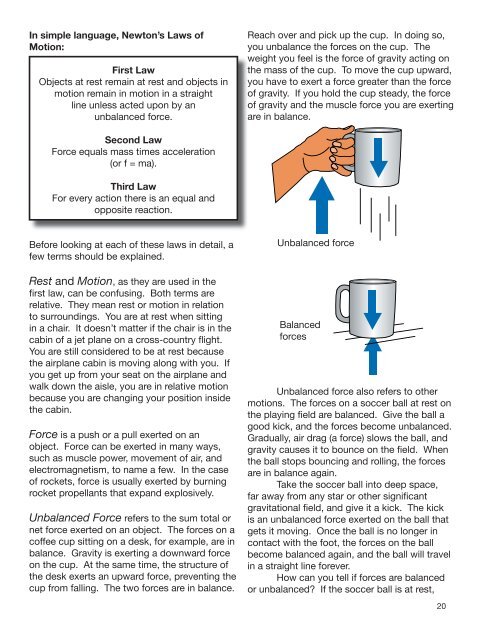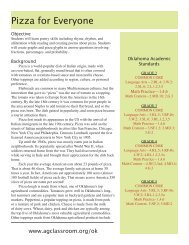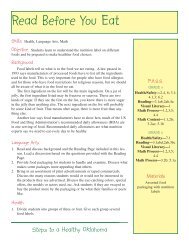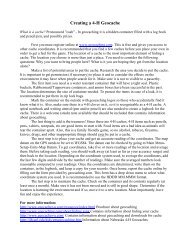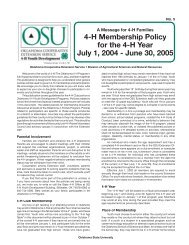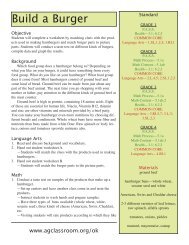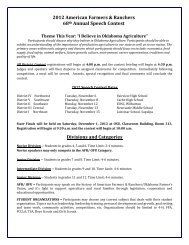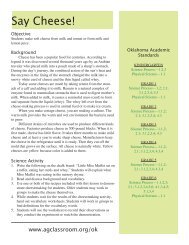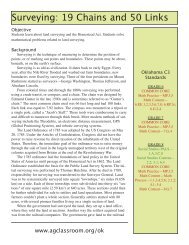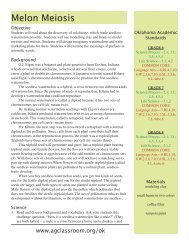Create successful ePaper yourself
Turn your PDF publications into a flip-book with our unique Google optimized e-Paper software.
In simple language, Newton’s Laws of<br />
Motion:<br />
First Law<br />
Objects at rest remain at rest and objects in<br />
motion remain in motion in a straight<br />
line unless acted upon by an<br />
unbalanced force.<br />
Reach over and pick up the cup. In doing so,<br />
you unbalance the forces on the cup. The<br />
weight you feel is the force of gravity acting on<br />
the mass of the cup. To move the cup upward,<br />
you have to exert a force greater than the force<br />
of gravity. If you hold the cup steady, the force<br />
of gravity and the muscle force you are exerting<br />
are in balance.<br />
Second Law<br />
Force equals mass times acceleration<br />
(or f = ma).<br />
Third Law<br />
For every action there is an equal and<br />
opposite reaction.<br />
Before looking at each of these laws in detail, a<br />
few terms should be explained.<br />
Rest and Motion, as they are used in the<br />
first law, can be confusing. Both terms are<br />
relative. They mean rest or motion in relation<br />
to surroundings. You are at rest when sitting<br />
in a chair. It doesn’t matter if the chair is in the<br />
cabin of a jet plane on a cross-country flight.<br />
You are still considered to be at rest because<br />
the airplane cabin is moving along with you. If<br />
you get up from your seat on the airplane and<br />
walk down the aisle, you are in relative motion<br />
because you are changing your position inside<br />
the cabin.<br />
Force is a push or a pull exerted on an<br />
object. Force can be exerted in many ways,<br />
such as muscle power, movement of air, and<br />
electromagnetism, to name a few. In the case<br />
of rockets, force is usually exerted by burning<br />
rocket propellants that expand explosively.<br />
Unbalanced Force refers to the sum total or<br />
net force exerted on an object. The forces on a<br />
coffee cup sitting on a desk, for example, are in<br />
balance. Gravity is exerting a downward force<br />
on the cup. At the same time, the structure of<br />
the desk exerts an upward force, preventing the<br />
cup from falling. The two forces are in balance.<br />
Unbalanced force<br />
Balanced<br />
forces<br />
Unbalanced force also refers to other<br />
motions. The forces on a soccer ball at rest on<br />
the playing field are balanced. Give the ball a<br />
good kick, and the forces become unbalanced.<br />
Gradually, air drag (a force) slows the ball, and<br />
gravity causes it to bounce on the field. When<br />
the ball stops bouncing and rolling, the forces<br />
are in balance again.<br />
Take the soccer ball into deep space,<br />
far away from any star or other significant<br />
gravitational field, and give it a kick. The kick<br />
is an unbalanced force exerted on the ball that<br />
gets it moving. Once the ball is no longer in<br />
contact with the foot, the forces on the ball<br />
become balanced again, and the ball will travel<br />
in a straight line forever.<br />
How can you tell if forces are balanced<br />
or unbalanced? If the soccer ball is at rest,<br />
20


